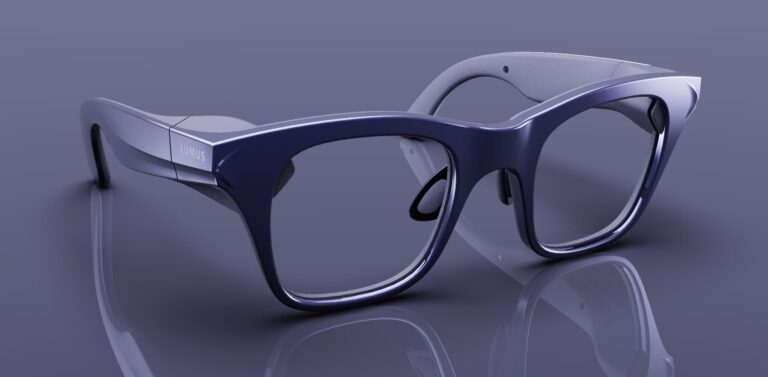
In an era driven by rapid technological advancements, augmented reality (AR) is a transformative force catalyzing excitement about the future of consumer technology and its practical implementation in our daily lives.
Devices like the Apple Vision Pro have showcased the remarkable potential of consumer-ready AR. However, as consumers crave more immersive, instant, and constant experiences, the limitations of current AR devices have become evident, particularly in terms of design, weight, and conspicuity.
Here enters waveguide technology – the near-to-eye display innovation poised to reshape the AR landscape by bridging the accessibility gap between existing devices and the lightweight, natural-looking glasses that will have the greatest impact on consumers.
The Key Component to High-Quality AR
For years, consumers have eagerly anticipated lightweight, stylish AR glasses with an unobtrusive form factor and transparent displays, which promise users a truly immersive and natural AR experience. However, delivering on this promise has been challenging for manufacturers.
Achieving the desired form factor for AR glasses demands a balance between optical clarity, daylight readability, ergonomic design, and a sufficiently wide field of view. Leading companies are currently producing solutions with a 50° field of view, while developing consumer products with even larger fields of view for future products. Achieving this requires pushing the boundaries of traditional optical technologies – and this is precisely where waveguide technology comes into play. Waveguides are a crucial component that have revolutionized the way we perceive digital information by guiding virtual content directly into our field of view.
Although waveguide architecture is one of the more prevalent AR technologies today, not all waveguide technologies employ mirrors.
Specifically, reflective 2D waveguide architectures use an array of partially reflective mirrors [heretofore referred to as “mirrors”] to reflect a virtual image into the wearer’s eye. The image travels through a waveguide in front of the eye, creating a transparent display that layers the virtual image over the view of the real world, seamlessly.
Light enters the waveguide through a small aperture, which is hidden in the temple of the eyeglasses, and leaves the waveguide through a larger aperture at the other end. The exit aperture is centered in front of the eye, where it redirects light and projects it toward the eye. The mirrors are micro-thin and embedded into the waveguide, not visible, so the eyeglasses look normal and have a slim profile.
These innovative mirrors and small entrance aperture not only reduce the bulk of the device, but also maintain the transparency of the glasses – fulfilling the promise of practical and stylish AR eyewear.
Two Camps: Reflective Vs. Diffractive Waveguides
Reflective waveguides are considered the optically superior option for manufacturers racing towards consumer-ready AR glasses. Diffractive waveguides, an alternative, use gratings or holograms rather than mirrors which can, and oftentimes do lead to fundamental problems with color clarity and brightness, arguably two of the most important optical parameters. Diffractive technology also projects less light into the eye while part of the display escapes outwards, impacting privacy and security by projecting personal information to onlookers.
Reflective waveguide technology remains the optimal choice for manufacturers, having overcome the limitations of conventional optics and enabling the creation of lightweight, stylish AR glasses that deliver impressive, high-quality visuals to users seamlessly.
Bridging the Gap
Designing mirrors into reflective waveguides has evolved significantly in recent years, with each
breakthrough making waveguides smaller, lighter, and thinner. Soon, AR users will reap the distinct benefits of reflective waveguide technology including a bright virtual display that’s easy to view even outdoors, distortion-free images with both uniform color and a true white balance, and impactful battery efficiency for everyday use.
We are at the beginning of the waveguide revolution that marks a pivotal moment in the journey toward seamlessly integrating AR into our lives. By addressing the limitations of current AR devices, waveguide technology opens the door to practical AR eyewear that offers immersive experiences without sacrificing style or comfort. As ongoing research and development continue to refine waveguide technology, the future of AR is poised to be lighter, clearer, and more immersive than ever before, revolutionizing industries and reshaping our daily experiences.
 David Goldman is VP of Marketing at Lumus.
David Goldman is VP of Marketing at Lumus.

